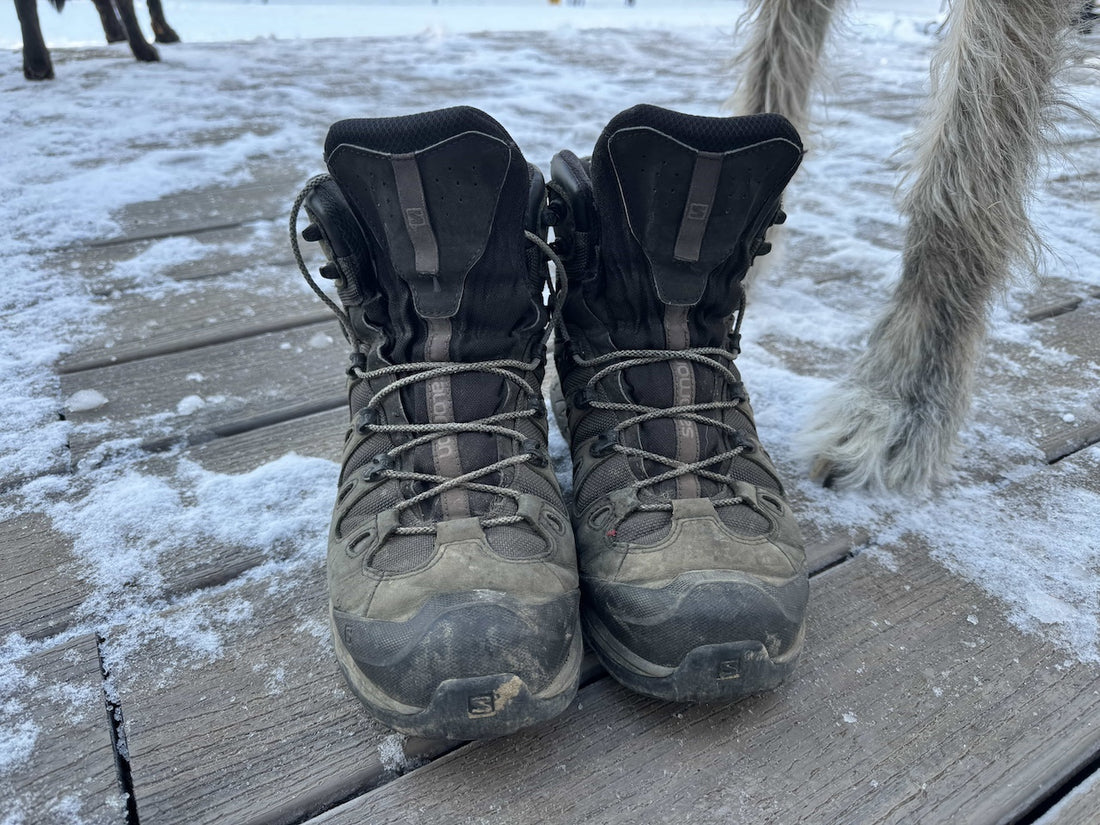One of the author's favorite hiking boots is the Salomon Quest 4 GTX. It is a hybrid leather/synthetic shoe with an extremely modern sole. This boot is the best all-around boot. What does this mean? It’s great at just about anything: long walks carrying a heavy backpack at altitude during elk season in Colorado? Yup. Carrying a plate carrier and rifle with about 40 pounds on you all day, with spicy footwork and taking a knee? Yup. Boots that do the trick in a working diver environment moving extremely heavy gear and being on your feet all day? Yup.
The thing that sets these boots apart from many others is that they are strong in all categories, not just a few. One of the most important attributes is the fit. The fit out of the box is excellent, and I am told by many that it works for a large number of different types of feet. One thing I love is that it puts an even amount of pressure over my foot without developing hot spots after walking for a long time. Once you lace them at the tightness you like, they stay there. It also has a large forefoot area in the boot, which is better for foot health and very nice when you are in them all day.
The sole, or Contragrip as Salomon calls it, is also very good. Over time, the author has owned boots previously that would become very slippery and unreliable in some conditions, for example, on wet rock or on ice. The author has found that Contragrip is very reliable on just about anything and does not have many weak points. It also does a pretty decent job at shedding mud when walking. The 4D chassis also does a great deal. Coupled with the grip, the 4D chassis is excellent at motion control when walking and feels a lot more efficient to walk in than other boots I have worn.
It is highly durable and fairly lightweight compared to other shoes in its class. The author has had his pair for around 5 years and has used them extensively. During this period, the only thing that failed was the shoe laces, which can somewhat be expected.
The boots come with an option for either Goretex or non-Goretex. The author recommends that if the user is going to be working exclusively in hot weather, the non-Goretex might be the option. For most, having the Goretex is a nice-to-have in any area where walking through dew with grass in the morning is common. The author has feet that run hot and thinks the Goretex model does a good job in both summer and winter environments when coupled with a good darn tough sock.
Salomon also offers a "Forces" line of boots, meant for the tactical environment. This tailors the boot slightly for this kind of work. The Quest model, for example, has some differences that many might not notice at face value, other than the color. The Quest 4D model followed by “EN” in black means it has gone through some sort of European certification. This certifies the boots as anti-static, anti-slip, and anti-puncture. Anti-static can be important when working around explosives, anti-slip ensures traction on a large variety of surfaces, and anti-puncture can be great to have when avoiding things such as punji sticks. The grip has also been modified by adding more durable rubber in some wear areas. This is important because these boots are usually worn in an environment wearing weight. This increases the longevity of the boot and makes it safer when it gets older, avoiding slick spots. The Quest has become a favorite for Tactical Teams and Military units because of this.
As the author said previously, boots can be tough to blindly recommend due to a wide variety of factors. However, this model seems to nail it, and the author knows many who run in this boot. Without a doubt, if you pick up a pair, you’re likely to love them like many others.

